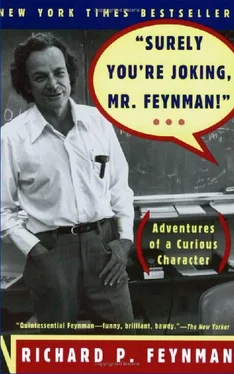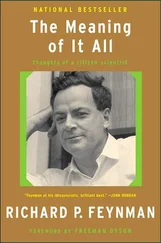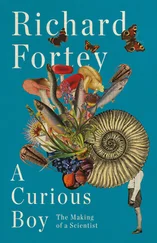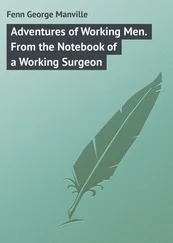During one of the breaks I overheard a guy who could really draw asking this model whether she posed privately. She said yes. “Good. But I don’t have a studio yet. I’ll have to work that out first.”
I figured I could learn a lot from this guy, and I’d never get another chance to draw this nifty model unless I did something. “Excuse me,” I said to him, “I have a room downstairs in my house that could be used as a studio.”
They both agreed. I took a few of the guy’s drawings to my friend Jerry, but he was aghast. “Those aren’t so good,” he said. He tried to explain why, but I never really understood.
Until I began to learn to draw, I was never much interested in looking at art. I had very little appreciation for things artistic, and only very rarely, such as once when I was in a museum in Japan. I saw a painting done on brown paper of bamboo, and what was beautiful about it to me was that it was perfectly poised between being just some brush strokes and being bamboo—I could make it go back and forth.
The summer after the drawing class I was in Italy for a science conference and I thought I’d like to see the Sistine Chapel. I got there very early in the morning, bought my ticket before anybody else, and ran up the stairs as soon as the place opened. I therefore had the unusual pleasure of looking at the whole chapel for a moment, in silent awe, before anybody else came in.
Soon the tourists came, and there were crowds of people milling around, talking different languages, pointing at this and that. I’m walking around, looking at the ceiling for a while. Then my eye came down a little bit and I saw some big, framed pictures, and I thought, “Gee! I never knew about these!”
Unfortunately I’d left my guidebook at the hotel, but I thought to myself, “I know why these panels aren’t famous; they aren’t any good.” But then I looked at another one, and I said, “Wow! That’s a good one. ” I looked at the others. “That’s good too, so is that one, but that one’s lousy.” I had never heard of these panels, but I decided that they were all good except for two.
I went into a place called the Sala de Raphael—the Raphael Room—and I noticed the same phenomenon. I thought to myself, “Raphael is irregular. He doesn’t always succeed. Sometimes he’s very good. Sometimes it’s just junk.”
When I got back to my hotel, I looked at the guidebook. In the part about the Sistine Chapel: “Below the paintings by Michelangelo there are fourteen panels by Botticelli, Perugino”—all these great artists—“and two by So-and-so, which are of no significance.” This was a terrific excitement to me, that I also could tell the difference between a beautiful work of art and one that’s not, without being able to define it. As a scientist you always think you know what you’re doing, so you tend to distrust the artist who says, “It’s great,” or “It’s no good,” and then is not able to explain to you why, as Jerry did with those drawings I took him. But here I was, sunk: I could do it too!
In the Raphael Room the secret turned out to be that only some of the paintings were made by the great master; the rest were made by students. I had liked the ones by Raphael. This was a big jab for my self-confidence in my ability to appreciate art.
Anyway, the guy from the art class and the nifty model came over to my house a number of times and I tried to draw her and learn from him. After many attempts I finally drew what I felt was a really nice picture—it was a portrait of her head—and I got very excited about this first success.
I had enough confidence to ask an old friend of mine named Steve Demitriades if his beautiful wife would pose for me, and in return I would give him the portrait. He laughed. “If she wants to waste her time posing for you, it’s all right with me, ha, ha, ha.”
I worked very hard on her portrait, and when he saw it, he turned over to my side completely: “It’s just wonderful! ” he exclaimed. “Can you get a photographer to make copies of it? I want to send one to my mother in Greece!” His mother had never seen the girl he married. That was very exciting to me, to think that I had improved to the point where someone wanted one of my drawings.
A similar thing happened at a small art exhibit that some guy at Caltech had arranged, where I contributed two drawings and a painting. He said, “We oughta put a price on the drawings.”
I thought, “That’s silly! I’m not trying to sell them.”
“It makes the exhibition more interesting. If you don’t mind parting with them, just put a price on.”
After the show the guy told me that a girl had bought one of my drawings and wanted to speak to me to find out more about it.
The drawing was called “The Magnetic Field of the Sun.” For this particular drawing I had borrowed one of those beautiful pictures of the solar prominences taken at the solar laboratory in Colorado. Because I understood how the sun’s magnetic field was holding up the flames and had, by that time, developed some technique for drawing magnetic field lines (it was similar to a girl’s flowing hair), I wanted to draw something beautiful that no artist would think to draw: the rather complicated and twisting lines of the magnetic field, close together here and spreading out there.
I explained all this to her, and showed her the picture that gave me the idea.
She told me this story: She and her husband had gone to the exhibit, and they both liked the drawing very much. “Why don’t we buy it?” she suggested.
Her husband was the kind of a man who could never do anything right away. “Let’s think about it a while,” he said.
She realized his birthday was a few months ahead, so she went back the same day and bought it herself.
That night when he came home from work, he was depressed. She finally got it out of him: He thought it would be nice to buy her that picture, but when he went back to the exhibit, he was told that the picture had already been sold. So she had it to surprise him on his birthday.
What I got out of that story was something still very new to me: I understood at last what art is really for, at least in certain respects. It gives somebody, individually, pleasure. You can make something that somebody likes so much that they’re depressed, or they’re happy, on account of that damn thing you made! In science, it’s sort of general and large: You don’t know the individuals who have appreciated it directly.
I understood that to sell a drawing is not to make money, but to be sure that it’s in the home of someone who really wants it; someone who would feel bad if they didn’t have it. This was interesting.
So I decided to sell my drawings. However, I didn’t want people to buy my drawings because the professor of physics isn’t supposed to be able to draw, isn’t that wonderful, so I made up a false name. My friend Dudley Wright suggested “Au Fait,” which means “It is done” in French. I spelled it O-f-e-y, which turned out to be a name the blacks used for “whitey.” But after all, I was whitey, so it was all right.
One of my models wanted me to make a drawing for her, but she didn’t have the money. (Models don’t have money; if they did, they wouldn’t be modeling.) She offered to pose three times free if I would give her a drawing.
“On the contrary,” I said. “I’ll give you three drawings if you’ll pose once for nothing.”
She put one of the drawings I gave her on the wall in her small room, and soon her boyfriend noticed it. He liked it so much that he wanted to commission a portrait of her. He would pay me sixty dollars. (The money was getting pretty good now.)
Then she got the idea to be my agent: She could earn a little extra money by going around selling my drawings, saying, “There’s a new artist in Altadena …” It was fun to be in a different world! She arranged to have some of my drawings put on display at Bullock’s, Pasadena’s most elegant department store. She and the lady from the art section picked out some drawings—drawings of plants that I had made early on (that I didn’t like)—and had them all framed. Then I got a signed document from Bullock’s saying that they had such-and-such drawings on consignment. Of course nobody bought any of them, but otherwise I was a big success: I had my drawings on sale at Bullock’s! It was fun to have them there, just so I could say one day that I had reached that pinnacle of success in the art world.
Читать дальше












